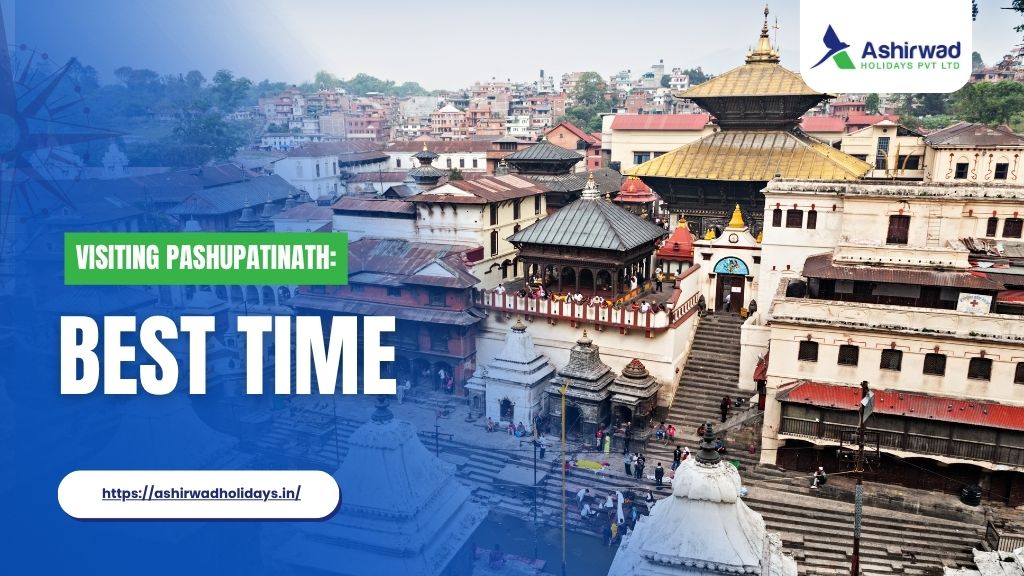Pashupatinath Temple in Kathmandu is one of the most sacred Hindu temples dedicated to Lord Shiva. For many pilgrims and travelers, visiting this revered site is a once-in-a-lifetime spiritual journey. Timing your visit can enhance not just your comfort but also your connection to the rituals, festivals, and ambiance of the temple. This guide explores the best seasons, ideal days, and essential tips to help you plan your pilgrimage.
Why Timing Matters
The experience at Pashupatinath Temple varies significantly with the seasons. From vibrant festivals to serene winter mornings, each time of year offers a different lens through which to witness the temple’s spiritual and cultural depth. Understanding the pashupatinath best time to visit will help you make the most of your journey.
Seasonal Breakdown
Autumn (September to November)
Autumn is considered the best overall time to visit Pashupatinath. The skies are clear, the weather is stable, and the temperature is comfortable. This period also coincides with Nepal’s biggest festivals like Dashain and Tihar, which are celebrated with great fervor at and around the temple. Expect moderate to high crowds, especially during the festival weeks.
Spring (March to May)
Spring brings a pleasant climate and blooming surroundings. If Maha Shivaratri falls during early March, this season becomes particularly important for devotees. Crowds are moderate, and the mornings and evenings are cool. It is a good time for spiritual reflection and photography.
Monsoon (June to August)
Monsoon season brings lush greenery but also frequent rainfall and humidity. While it is considered the off-season for tourism, it has significance for locals. The month of Shravan, typically falling in July or August, is especially holy for Lord Shiva devotees. Visiting during this time offers a more authentic and local experience, but you should be prepared for slippery paths and travel delays.
Winter (December to February)
Winter is the quietest time at Pashupatinath Temple. With chilly mornings and fewer tourists, the temple takes on a peaceful and reflective atmosphere. Pilgrims often visit in February for Maha Shivaratri, one of the most important Shiva festivals. This is an ideal time for those seeking solitude and spiritual depth.
Best Days and Time of Day
To make the most of your visit, consider arriving either early in the morning or during the evening aarti.
- Morning Visit (around 6:00 to 7:00 AM): A calm and spiritual start to your day. The temple is less crowded, and the atmosphere is meditative.
- Evening Visit (around 6:00 to 7:00 PM): The evening aarti on the banks of the Bagmati River is a visually stunning and deeply moving experience. It draws both locals and pilgrims and is a highlight for many visitors.
The temple complex is generally open from 4:00 AM to 12:00 PM and then again from 5:00 PM to 9:00 PM. Keep in mind that only practicing Hindus are allowed inside the main sanctum. Others can explore the outer courtyards, ghats, and watch the rituals from a respectful distance.
Travel Planning Tips
- Getting There: The temple is about five kilometers from central Kathmandu. You can reach it by taxi, local bus, or ride-share services.
- Entry Fees: Entry is free for Indian and Nepali nationals. Foreign nationals may need to pay a nominal fee.
- Dress Code: Modest attire is expected. You will need to remove your shoes before entering sacred areas.
- Respect Rituals: Pashupatinath is an active spiritual site. Cremation ceremonies are often visible along the Bagmati River. Visitors should observe respectfully and avoid photography in sensitive areas.
- Monsoon Precautions: If visiting during the rainy season, wear waterproof clothing and carry non-slip shoes. Also, be cautious of monkeys near food.
Recommended Times Based on Purpose
- For a well-rounded experience with ideal weather: September to November
- To witness major spiritual events like Maha Shivaratri: February to early March
- To avoid crowds and explore quietly: December and January
- To immerse in local devotional practices during Shravan: July and August
Conclusion
Choosing the right time to visit Pashupatinath Temple can significantly enhance your pilgrimage. If you are seeking pleasant weather and cultural richness, autumn is the most favorable. For spiritual depth and festival energy, spring offers the ideal backdrop, particularly during Maha Shivaratri. Winter is perfect for a quiet, contemplative journey, while the monsoon provides a more intimate view of local traditions.
No matter when you go, understanding the pashupatinath best time to visit helps you align your travel with your intentions, whether they are devotional, cultural, or personal.
Prepare your heart, time your journey, and let the sacred atmosphere of Pashupatinath guide your path.

